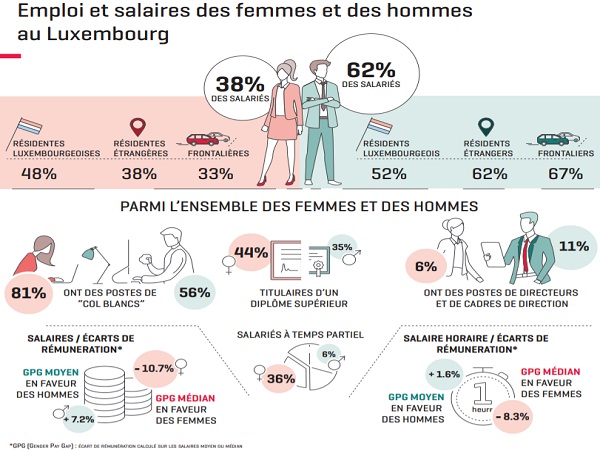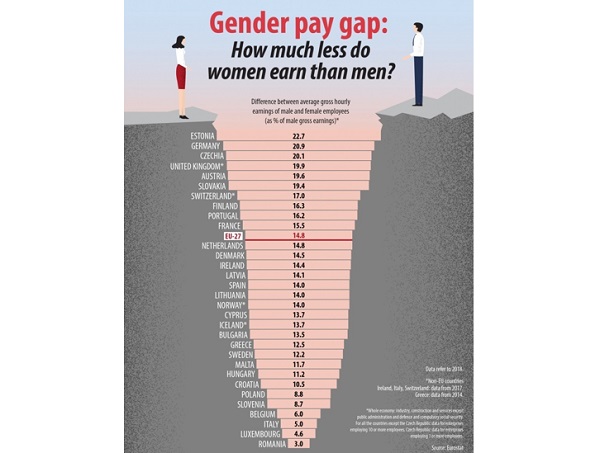 Credit: STATEC; Eurostat
Credit: STATEC; Eurostat
In the run-up to International Women's Day, celebrated annually on 8 March, STATEC has published a report on the employment and salaries of men and women in Luxembourg, the results of which it presented on Monday during an economic seminar.
According to STATEC, only 38% of employees in Luxembourg are women and they remain concentrated in some sectors and almost absent in others. While women have made significant progress in managerial positions, very high salaries seem to remain inaccessible to them. Despite being more qualified than men, four out of five women hold white-collar positions. They are also very present among elementary professions, with very low wages.
Whilst the average salary of women under the age of 40 is higher than that of men and women in general in Luxembourg have a higher median salary than men, the year-end bonuses benefit men more.
During Monday's economic seminar, Luxembourg's Minister of Equality between Women and Men, Taina Bofferding, noted: “STATEC's work shows us to what extent and at what level the imbalances between women and men persist in employment - whether it is access to positions of responsibility, in terms of salaries, and to have a good work-life balance and private life. Together with business leaders, employees and equality representatives, we want to act to make equality a reality on a daily basis".
In addition, a recent report by Eurostat revealed that Luxembourg had the second lowest gender pay gap (4.6%) in the European Union (EU) in 2018, after Romania (3.0%). Estonia had the highest gender pay gap (22.7%), followed by Germany (20.9%) and Czechia (20.1%). The EU-27 average gender pay gap in 2018 was 14.8%. The data included in Eurostat's report refers to the unadjusted gender pay gap, which is defined as "the difference between the average gross hourly earnings of men and women expressed as a percentage of the average gross hourly earnings of men".









